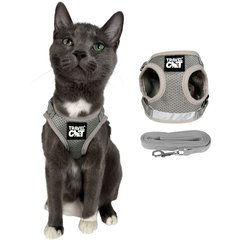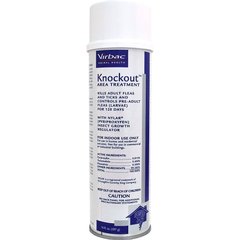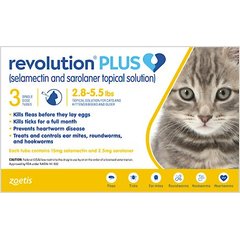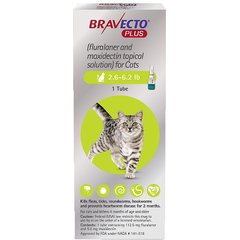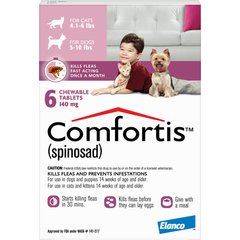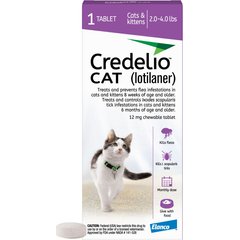How To Get Rid of Fleas on Cats: 4 Ways To Kill Cat Fleas
Mukhina1/iStock / Getty Images Plus via Getty Images
Fleas are one of the most common external parasites in cats, and these insects can be quite pesky.
Knowing how to get rid of fleas on cats can help if your feline friend is affected.
A variety of flea treatments are available for cats, and understanding how each one works can help you choose the most effective option to eliminate fleas from your pet and your home.
Key Takeaways
- Cats of all ages and breeds are susceptible to fleas.
- Cats are often allergic to flea bites, leading to skin inflammation and itchiness.
- Fleas on cats are best killed using a prescription flea prevention medication.
What Are Cat Fleas?
Fleas are tiny (2–3 mm), flat bodied, brown or reddish insects. While the most common flea found on cats is Ctenocephalides felis (the cat flea), more than 2,200 different types of fleas have been identified in the environment and on pets worldwide.
These tiny critters are wingless and survive by feeding on the blood of animals.
Cats of all ages and breeds are susceptible to fleas. This means that year-round flea prevention is important for indoor cats as well as those who are allowed to spend time outdoors. Keeping cats indoors is generally best for their safety and well-being. Consider a catio or leash walks if they like to spend time outdoors.
How To Tell If Your Cat Has Fleas
Cats are often allergic to flea bites, leading to skin inflammation and itchiness.
Although fleas can cause generalized itchiness, the base of the tail and the back of the neck are most affected. Other signs your cat may have fleas include the presence of flea dirt (flea feces), which looks like black pepper flakes in your cat’s fur, and skin irritation or infection, which is evident by:
4 Ways To Get Rid of Fleas on Cats
To get rid of fleas on cats, you’ll need to treat all the pets in your home, including dogs, cats, and other small mammals such as rabbits or guinea pigs.
You’ll also need to treat your home, including any bedding your pets use, all carpets and rugs, plush toys, and anything else that may harbor flea eggs, as well as your yard.
All flea life stages must be eradicated to prevent reinfestation. Follow the following steps to get rid of fleas in cats.
1. Use a Flea Comb
Combing your cat with a fine-toothed comb can help remove adult fleas. If you can bathe your cat, you can use a flea comb after lathering your cat’s fur to help remove fleas and flea dirt. If your act is not amenable to bathing, which is common, you can use the flea comb along with one of the flea treatments described below to help eradicate the fleas.
2. Give Your Cat a Bath
Bathing with flea shampoo or Dawn dish liquid (commonly used on young kittens) can help to get rid of fleas on cats.
Use a shampoo that is labeled for cats and recommended for your cat’s particular life stage (adults or kittens).
And be careful—bathing cats is usually easier said than done.
3. Treat All Pets in Your Home
Flea prevention medication is the most effective treatment for eliminating fleas in cats. Many veterinary-approved products are available, including:
-
Topical flea preventatives—Topical preventatives, such as Revolution Plus and Bravecto, are applied to the skin and kill live fleas, flea eggs, and larvae.
-
Topical preventatives should not be applied 48 hours before or after a bath.
-
-
Oral flea preventatives—Products like Comfortis and Credelio are chewable tablets that are given monthly to kill live fleas, but they don’t kill flea eggs or larvae. Capstar is a pill that quickly kills live fleas on pets but lasts only 24 hours.
-
Flea collars—Veterinary-approved flea collars, such as Seresto, can also provide effective flea prevention. However, over-the-counter flea collars do not effectively treat or prevent fleas in cats or dogs.
Eliminating fleas from your home takes time. All pets in the home must be treated for at least three months for effective management.
If you use over-the-counter flea remedies, always use species-specific products because dog products can be highly toxic to cats.
Ensure that the product is designed for use on a cat’s skin and not for your home or the environment.
4. Treat Your Cat’s Environment
Treating your cat’s indoor and outdoor environment is also essential.
Any area where your cat rests or plays can harbor adult fleas, eggs, larvae, or pupae, and proper extermination is necessary.
Thoroughly clean your home, including:
-
Hard floors
-
Carpets and rugs (including underneath furniture)
-
Furniture
-
Your bedding
-
Toys
-
Feeding locations
-
Pet bedding
-
Litter boxes
Purging the environment of fleas requires scrupulous vacuuming, flea-killing products (e.g., pet-safe flea sprays), and possibly a professional exterminator.
You can also spray your yard with a pet-safe flea product or have an exterminator treat the yard for you.
If you have a large yard or have a persistent flea problem, an exterminator would be the best option to rid your yard of fleas.
When To Call Your Vet About Cat Fleas
If your cat remains itchy or develops a skin rash, or if your efforts to rid your cat of fleas are unsuccessful, a trip to the veterinarian is recommended.
Prescription flea products are much more effective than over-the-counter products to treat and prevent flea infestations.
While treating your cat for fleas, keep a close eye on their appetite, behavior, and overall health.
If they don’t seem like themselves, a veterinary visit is also recommended.
Fleas transmit conditions such as tapeworms and bartonella, and severe infestations can lead to anemia in cats.
The following signs of anemia are considered a veterinary emergency:
When in doubt, schedule a visit so your veterinarian can determine the best way to rid your cat and home of fleas.
How To Get Rid of Fleas on Cats FAQs
What kills fleas on cats best?
Fleas on cats are best killed using a prescription flea prevention medication. Topical preventatives, such as Revolution Plus, kill adult fleas, eggs, and larvae within 12 hours of application, with at least 98% of fleas killed within 24 hours.
What should I do if my indoor cat has fleas?
If your indoor cat has fleas, all pets in your home should be treated for at least three months. At the same time, the indoor and outdoor environments should also be fully treated to avoid reinfestation.
Administering year-round flea prevention throughout your cat’s life can help prevent a recurrence.
How do you get rid of flea dirt on cats fast?
In general, oral flea preventatives tend to work faster than topical ones. Oral flea medications, such as Capstar, begin to kill fleas within 30 minutes, but control fleas only for 24 hours. Luckily, Capstar can be given along with most traditional flea preventatives to provide long-lasting protection.
How do you get rid of cat fleas naturally?
Unfortunately, there are no reliable or effective ways to treat fleas naturally in cats. However, all-natural products, such as Wondercide spray, can be a great additions to an established prescription flea regimen.
Wondercide spray is helpful because it can repel fleas and other insects, while most prescription flea preventatives don’t repel fleas.



